For Michael Whaley, interior design is not just a profession, it is about creating new friendships. Before embarking on any new design project, Whaley gets to know his clients so well that he is “able to figure out what they want in life and translate that into their home in a way that they never would have imagined.” He is not a designer who opens a catalogue and purchases a household full of new furniture. Instead, he mixes carefully selected antiques with contemporary pieces – often custom – to create truly unique interiors. The result is a highly customized home that perfectly captures the personality and lifestyle of its inhabitants.
Before founding his own firm in 1987, Whaley worked at Parish-Hadley, a defining experience in his career. He also studied 18th century design while living in France, and he has a degree from Columbia University. As a long time fan of Whaley’s work, I am delighted to welcome him today for a Q&A!
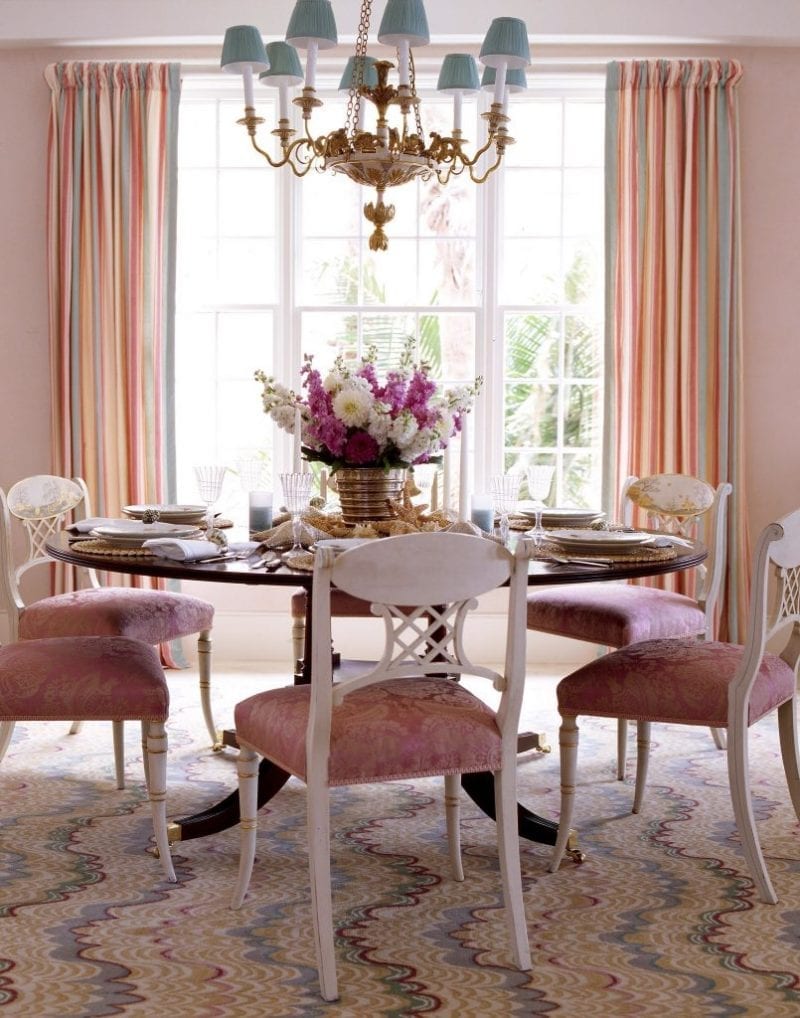
Q: One of your clients said about your work, “My house doesn’t look like anyone else’s home. I have unusual wall treatments, extraordinary light fixtures, and gorgeous antiques. This is not do-it-yourself decorating!” How do you go about creating extraordinary and personally customized interiors for your clients?
A: The most important element of a successful design project is trust. It is not only trust in the sense that the client trusts that the designer knows what works best, but that clients need to trust in themselves that they are making the right choice by working with a particular decorator or designer. The biggest stumbling block I come across today is a lack of self esteem among potential clients. If a client doesn’t have confidence in themselves and their choices – the project is doomed! Once I feel comfortable that a client will be a good fit I set out to get to know them a bit before I start coming up with a scheme. After I get an idea of what they want to achieve with their home, their hopes and dreams – I try to figure out how much further I can nudge them out of their comfort zone and into the world of fabulous one of a kind design. It takes a little bit of time and a lot of psychology, but it’s worth it because the end result is fantastic, and the clients are so thrilled with the interiors!
My initial presentation might center around a rug or a painting, a color, or just a furniture floor plan. As the scheme evolves and I get to know the clients personality better I begin to add in the extraordinary and personal details. It really becomes a friendship, and because I am so close to my clients I am able to figure out what they want in life and translate that into their home in a way that they never would have imagined.

Q: Why is historic knowledge important in design, and how did your experience studying 18th century design in France influence your aesthetic?
A: I feel it is critically important to know where things come from – what is the origin of their use? Decorating isn’t just shopping for pretty things and putting them all together – although that is how it is portrayed on television which isn’t helpful to the profession! I find it inspiring to build off of tradition and history. What a challenge to find an image of an historic room and pull out certain details and reinvent them for today’s lifestyle without making it look like a pastiche of different ideas that have nothing to do with each other.
My studies in Paris were enlightening to me in regards to the history of interior design. In the 18th century everything had a purpose and was in some way correlated to the other elements of a room. It was much more strict then. Often the boiseries (carved paneling) of a room had certain design elements that were echoed in the fabrics or in the carvings of the furniture. A rug was often designed and woven to reflect the pattern of the plaster ceiling above. In the past rooms were used in ways so different from today. There were state rooms for formal functions where a certain protocol of behavior was observed. More casual living took place in the private apartments which would be a series of rooms – often all on one level – with the bedroom right off the main salon. Dining rooms in 18th century France, for instances, were rarely set up with a table in the center of the room and chairs all around it. The dining tables had wheels and were rolled into the room for a meal. Chairs were lined up along the walls. More often than not they were covered in the same fabric as the wall upholstery or the curtains. Fabrics were extremely expensive – even for nobles – and for that reason they often upholstered the outside backs of chairs in an inexpensive Tattersall as they were never seen. It was considered too much of an extravagance to use the face fabric on the back side of the chairs. What once was a way to save money has since become a way to make the chairs surrounding a dining table chic and interesting by adding a second fabric to the mix. It can be as subtle as a small check in the colors of the main fabric or a shimmery silk satin in a bold color.
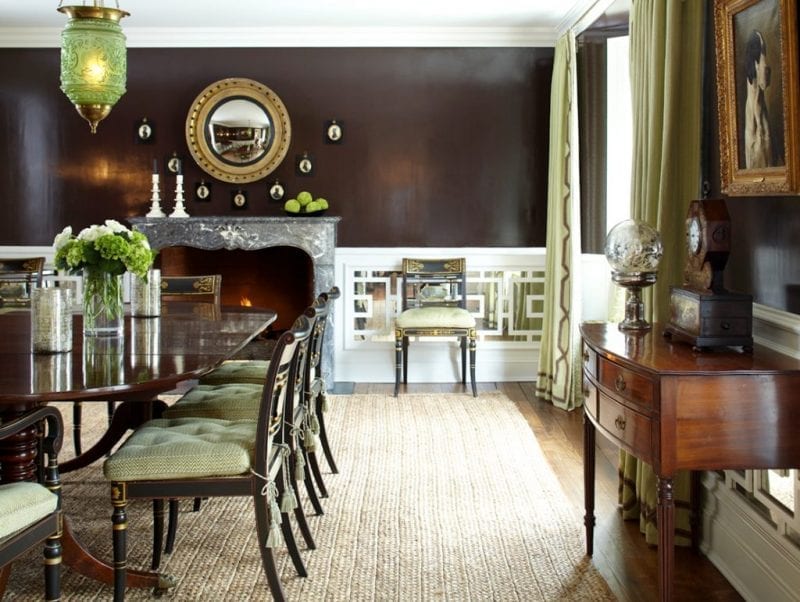
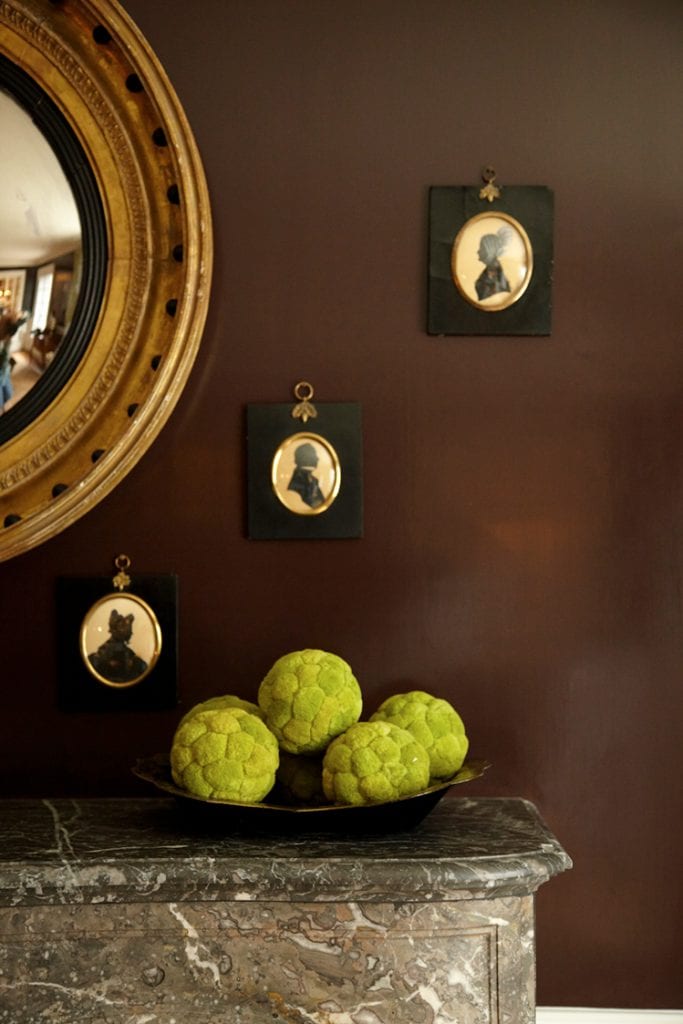
Q: Tell me about your passion for antiques and how you incorporate them within your interiors.
A: I do love antiques. Each piece is unique and there is a history that comes with them. Antique furniture was finely made – the woods available were better than what we have to work with today, and the finishes have patina. Antiques add a sense of permanence to a room, and they can do so without looking like a country house inn. Currently I am using antiques and contemporary pieces together. I feel that people are in search of a simpler look – perhaps to take their minds off the craziness of the world we are living in today – and luxurious upholstery mixed with a modern table or two and a few French arm chairs makes the antiques look like objects of art! We are living in a world of copy cats. Its so easy to go on Pinterest (or Instagram) and find a room that you like and copy it exactly. Not very satisfying I imagine. People often copy what I do, so one of my challenges is to come up with designs that are too difficult to copy. I do this by using unusual one of a kind antique pieces as well as hard to duplicate finishes.
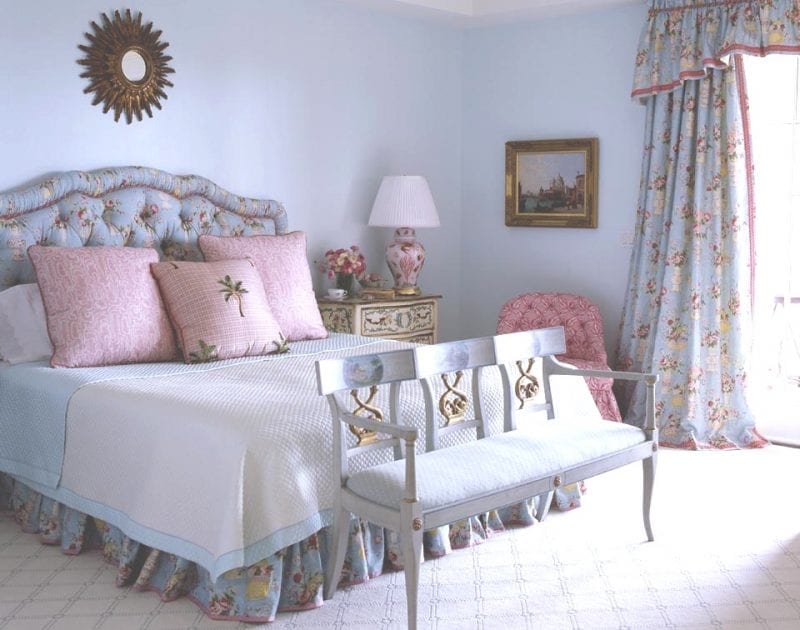
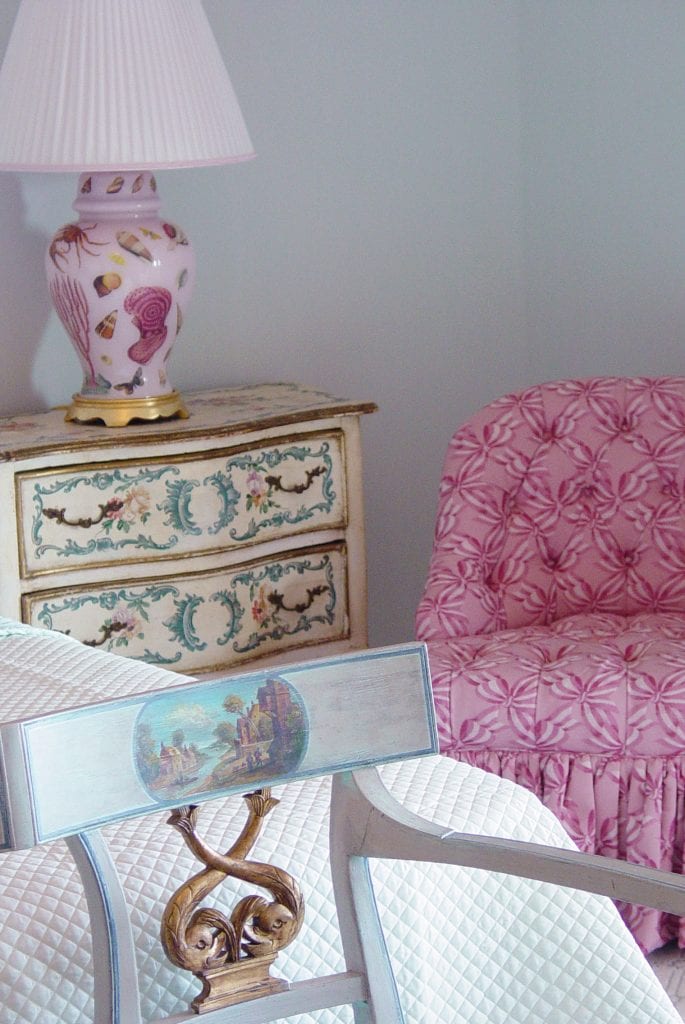
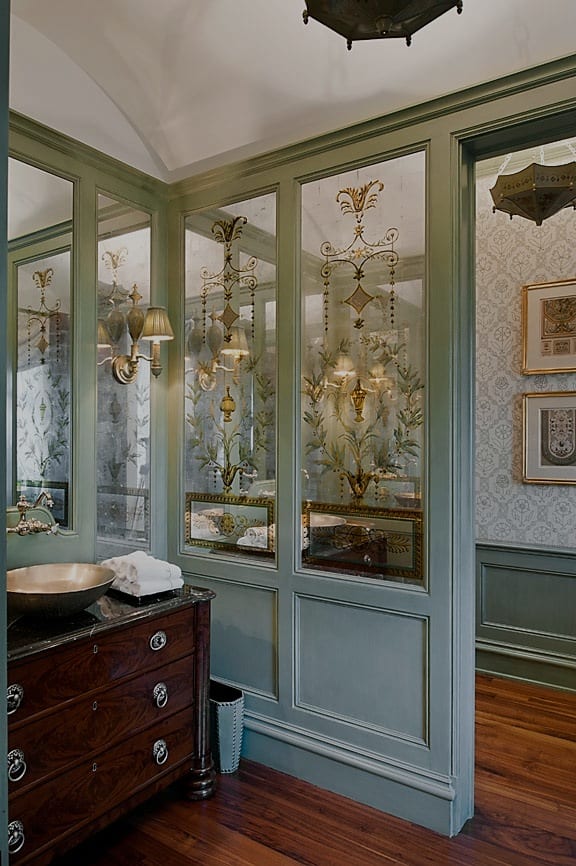
Q: How did your work at Parish-Hadley influence your career?
A: My time at Parish Hadley was magical for me. I visited some of the most fabulous apartments in New York City and estates in the surrounding counties. The client list at Parish Hadley in the 1980s was the Who’s Who of Society. It was back in a time when celebrities were just actors and singers, and most people weren’t as fascinated by them. Parish Hadley was my second design job. My first was with Mario Buatta – an extremely talented designer with a larger than life and very colorful personality. His clients adored him, and his love of his craft was apparent in everything he did. Not long after I left his employment a job at Parish Hadley came up and I jumped at the chance. Where Mario was a 1 person firm with 1 assistant (me at the time) and a bookkeeper– Parish Hadley had 32 employees when I was there, an entire floor of an office building on the Upper East Side, and a dress code! Back then – coat and tie for every man and dresses or skirts for the women.
At Parish Hadley there was a certain way to write an order, a certain order in which to design a home: fix the architecture first, design the furniture plan, scheme the rooms, purchase everything, install all at once down to the waste baskets and embroidered hand towels. They were a full service, top to bottom firm – and that is what I took away from working there. My firm is very focused on attention to the client, attention to the details, attention to a very high level of quality. Its time consuming but it makes a difference in the final product – a difference that a discerning clientele appreciates.
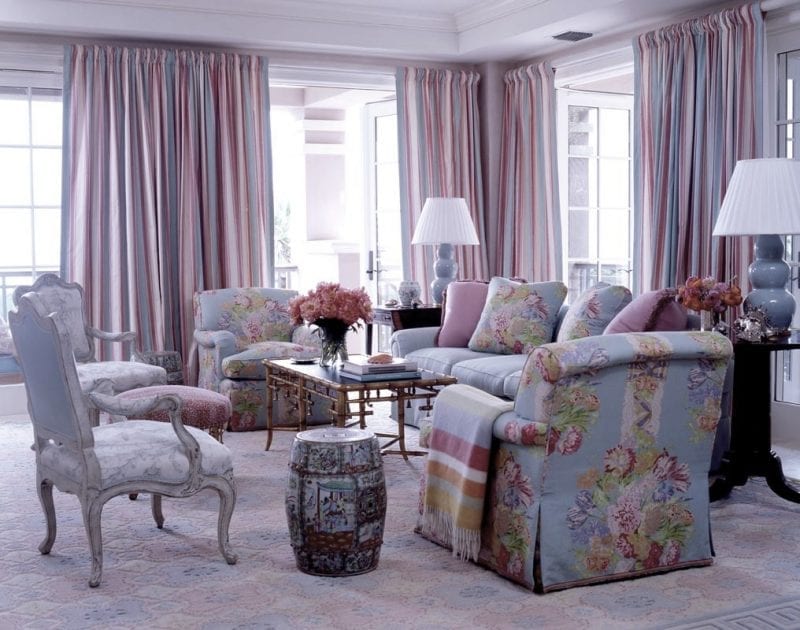
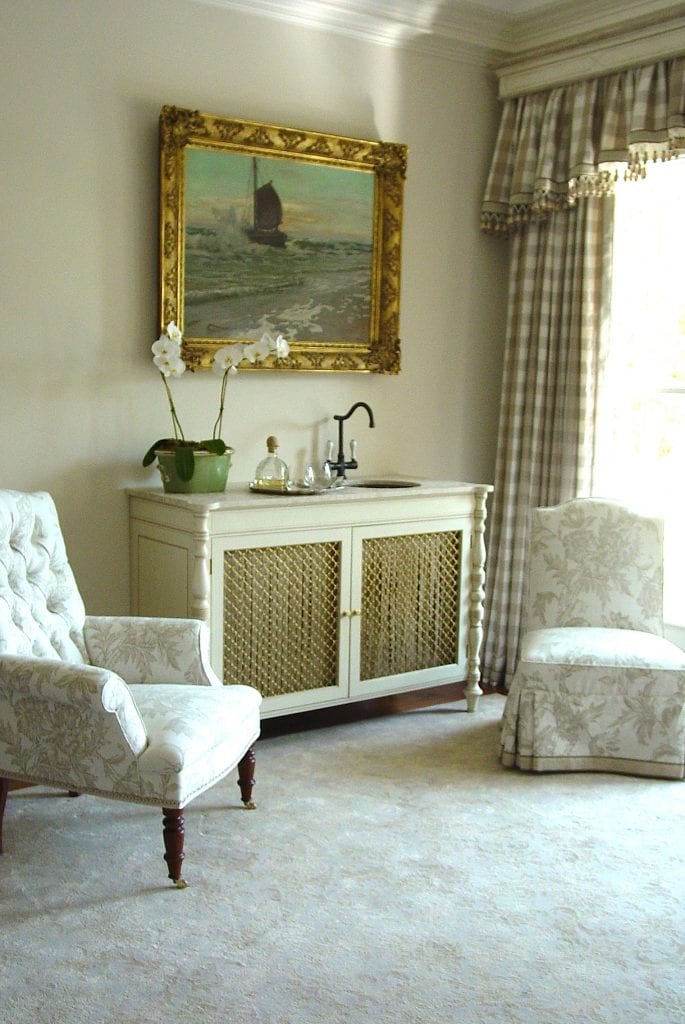
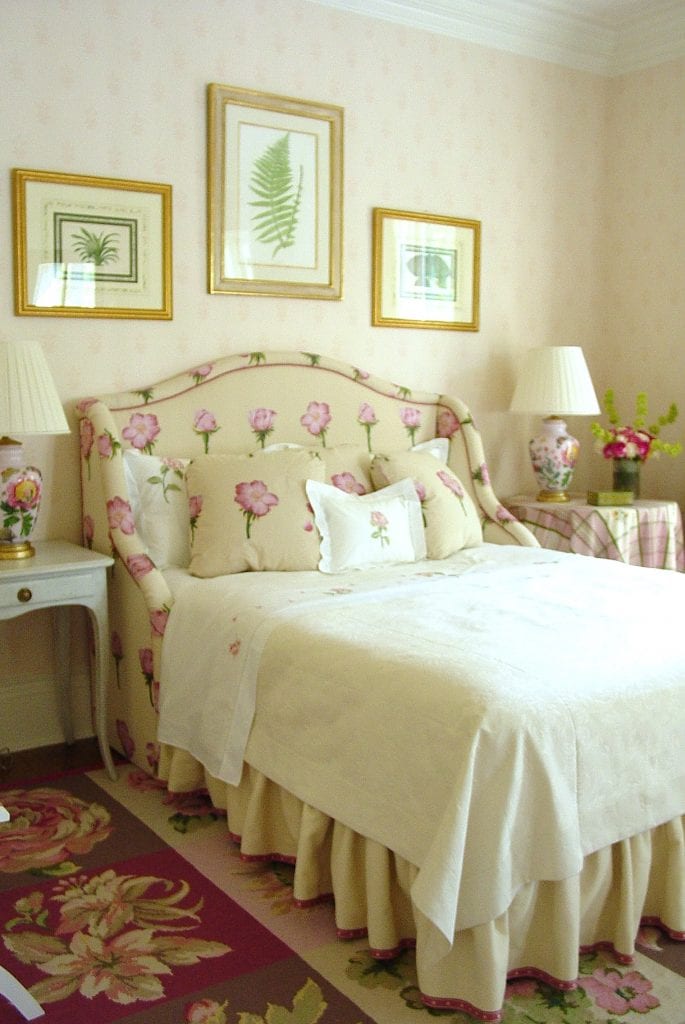
Q: Which interior designers – past or present – do you most admire and why?
A: There are so many! Where to start?
Sister Parish for her attention to comfort and her skill at getting a lot of furniture into a room without making it look crowded. Also a great talent for subtly combining unexpected colors (like aubergine, pink, ivory, light blue – who does that?)
Albert Hadley for his mechanical precision about approaching room design, and his talent at editing a space without making it look empty or unfinished. That’s part of the reason that Albert and Sister worked so well together. Even though they mostly had separate projects, when they did collaborate – she would add some frills to his rooms and he would take a few pieces away from hers … and the results were perfect.
Renzo Mongiardino (and later Studio Peregalli) for the lavish historical richness they add to every project they do. The level of superlative detail in each room they design(ed) is incredible. They have been a great source of inspiration to me over the years.
Miles Redd. I love his sense of color! He’s such an over the top personality, and I can see in his interiors that level of trust that his clients have in him. They allow him to come up with the most incredible combinations and let him run with it.
Michael Simon does very high style French design in sublime, muted palettes. There’s a breathless “aha moment” every time you see one of his rooms. His work reminds me of my days in Paris and my studies of 18th century French interiors.
Madeleine Castaing for her use of bright colors, chintz, Regency and Victorian furniture in rooms that made them feel up to date and modern for the times. Her work was as quirky as her personality, but they were captivating – they had a sense of history and mystery.
David Kleinberg is the designer at Parish Hadley I worked under during my tenure at the firm. Having been on my own now for 25 years and mostly a traditionalist I can look at his work with admiration. Although much more modern than my look – I appreciate his lazer sharp attention to perfection, his rooms look perfectly put together – not in an off putting way – rather in an inviting “Oh I wish I could live there” way. He is known for his beige rooms – but I love what he creates when he uses color.
Brian McCarthy is an incredibly talented designer who’s work never ceases to astound me! I know Brian from my Parish Hadley days – we were both assistants at the time. He is so skilled at infusing a room with color and glamour – and that’s what I love! He is the one decorator I would have do my home if I had all the money in the world. I would let him GO WILD!!
If I spent more time I could probably come up with 20 more designers past and present whose work inspires me. I’m sure I’m forgetting a few that should be on this short list!
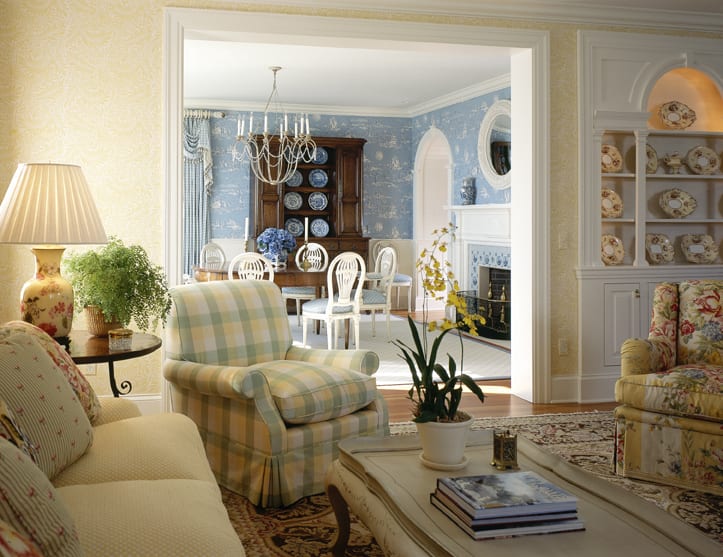
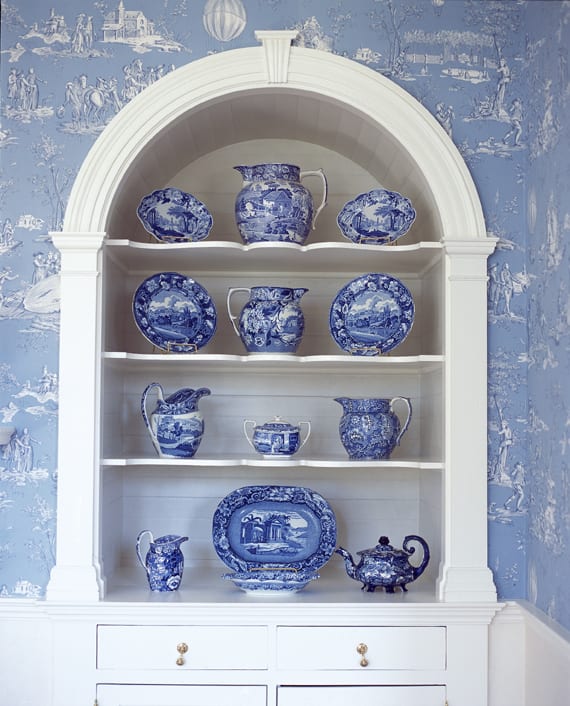
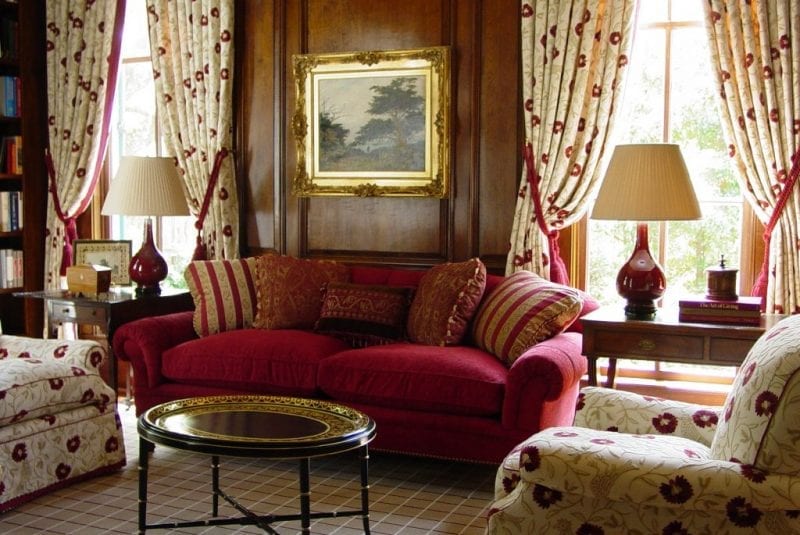
Q: Where do you find inspiration?
A: I find inspiration everywhere – except design magazines (I find them pretty boring these days!) It used to be that there would be so much in World of Interiors, British House and Garden, House and Garden (NY edition), etc. but now everything looks the same. I get inspiration from many of the beautiful images on Instagram. Also historic house touring, visits to the Met Museum, and now – more than ever -fashion! Who knew I’d be looking towards fashion to see what I can extract from it for an interior? I’ve become more aware of it because of my 2 daughters who are obsessed with it, and I find it interesting to see what they are looking at – what interests them. Also – over the last decade it seems that my clients have become very interested in fashion as well and I want to be able to design rooms that they look fabulous in. It’s also a good selling point if I can reference a collection or a bag of the moment when presenting a scheme.
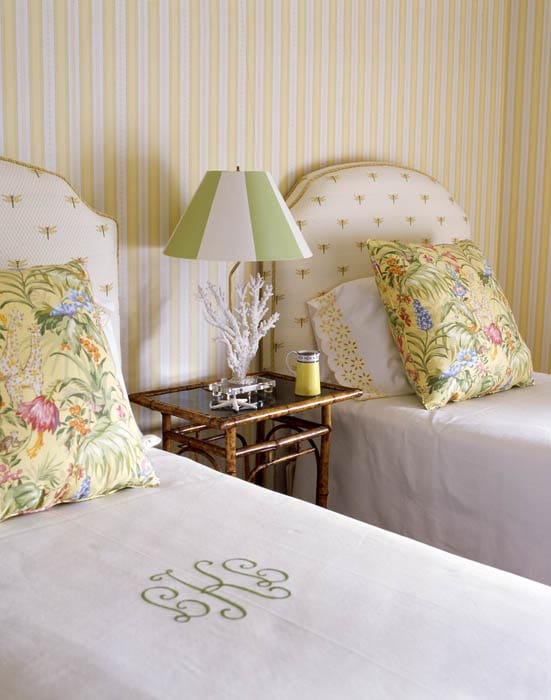

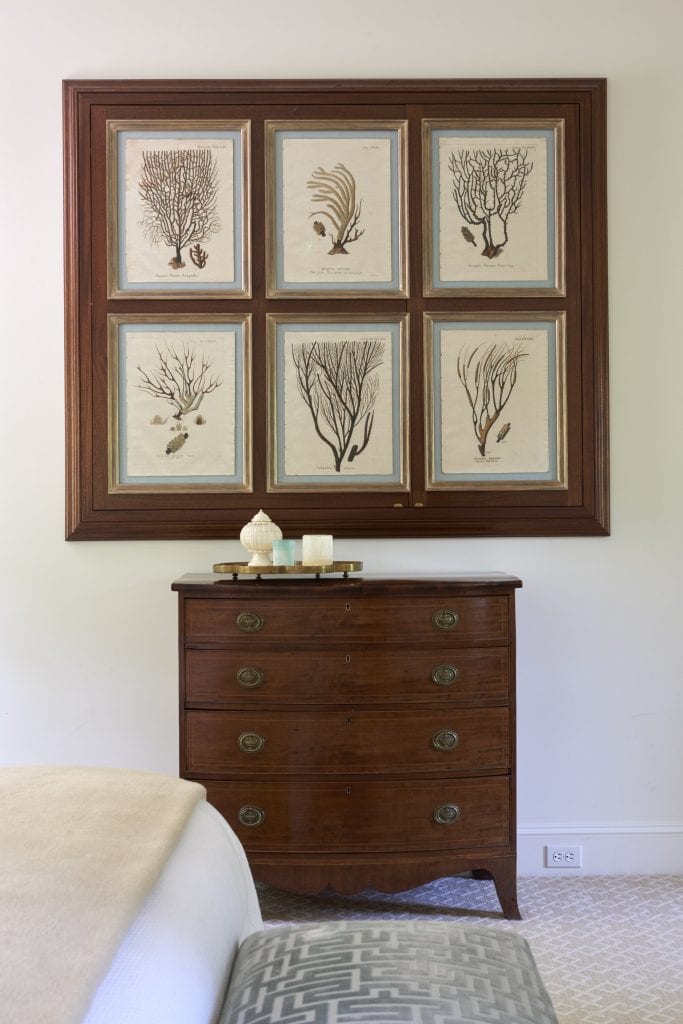
Q: You also offer architecture consultation and construction supervision… Why is it important to begin thinking about interior design at these early stages of a project?
A: I studied architecture at Columbia for a bit before changing my major and moving into interior design, but what I did learn was extremely helpful for me in that I studied the history of architecture which informs how I lay out a room – and how I might “correct” a room. During my time at Parish Hadley there was a full architectural staff that worked on every project big and small. From them I learned where light switches work best, why it’s important to have outlets half switched, where and how to place projector lights to illuminate fine art. I also learned about symmetry and balance in a room. We would often move a door 10 to 15 inches in order for it to align correctly with a window or another door in a room – and I still do that today. If I am fortunate enough to work with one of these architects we can immediately bond and set about to making a project a jewel. But if that’s not the case – I can offer suggestions at the construction stage in regards to flow, door and window placement, lighting, etc. that will enhance a project. Simple changes or revisions at the design stage can make a huge difference – though it is a bit of a balancing act. I have the client’s best interests at heart, but I have to make suggestions in a way that won’t challenge an architect or builder’s ego. It’s not easy.
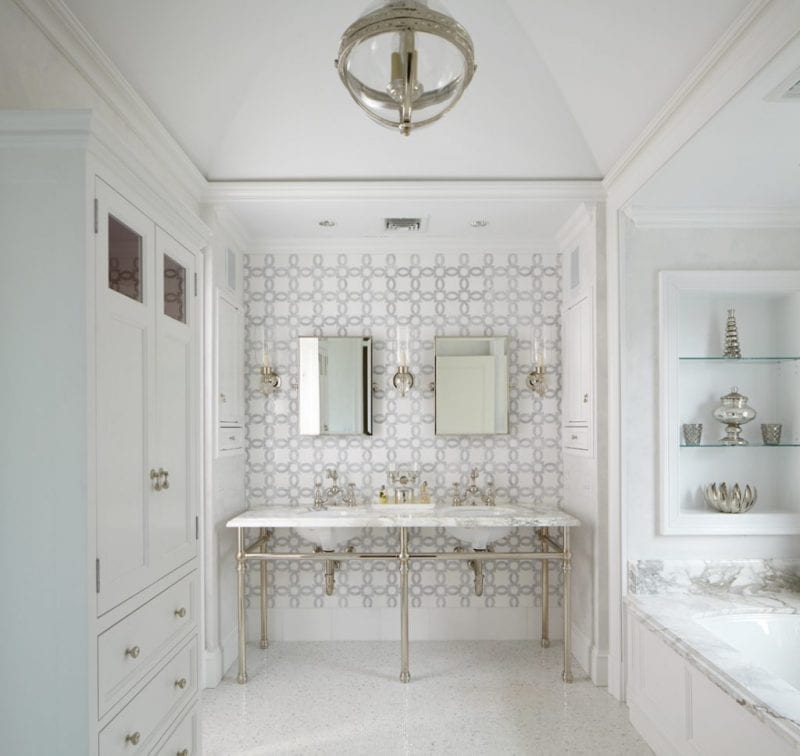
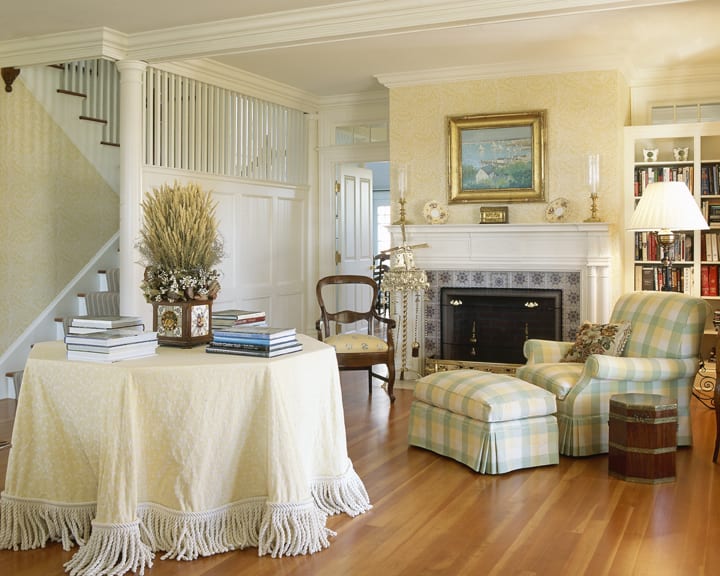
Q: How do you design a home that will stand the test of time?
A: I think a home can stand the test of time if it is of very high quality design. There is a lot of cheap modern furniture made in China that is ending up in a lot of homes these days – I guess catering to everyone’s need for “instant cool”. But that look is mostly over before the installation is complete. You can pretty much assign a year to many of the homes photographed of late. The homes I have designed for my clients over the years still look fantastic today. And I feel that the best way to design a room that stands the test of time is to know that it is never finished. Every couple of years – let’s move things around a bit. Add a piece here or there – a new pillow. But start with good bones. Anything super trendy will look out of date in a few years.
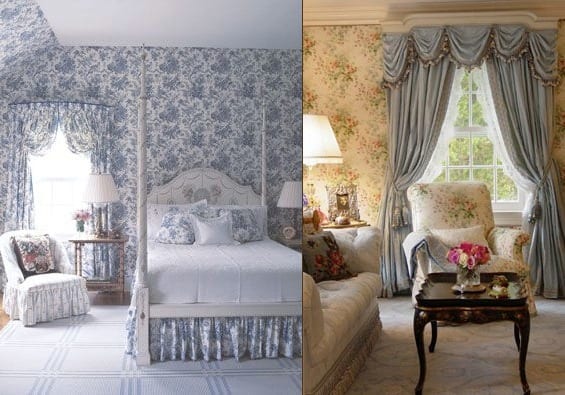
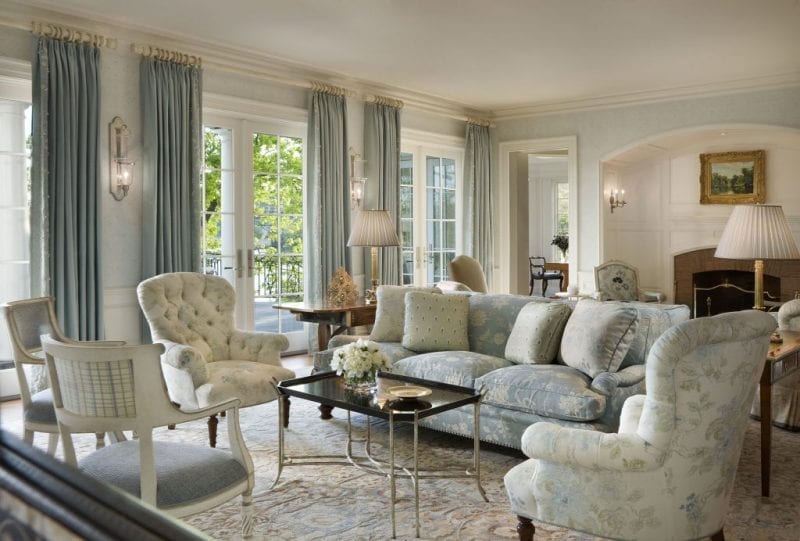
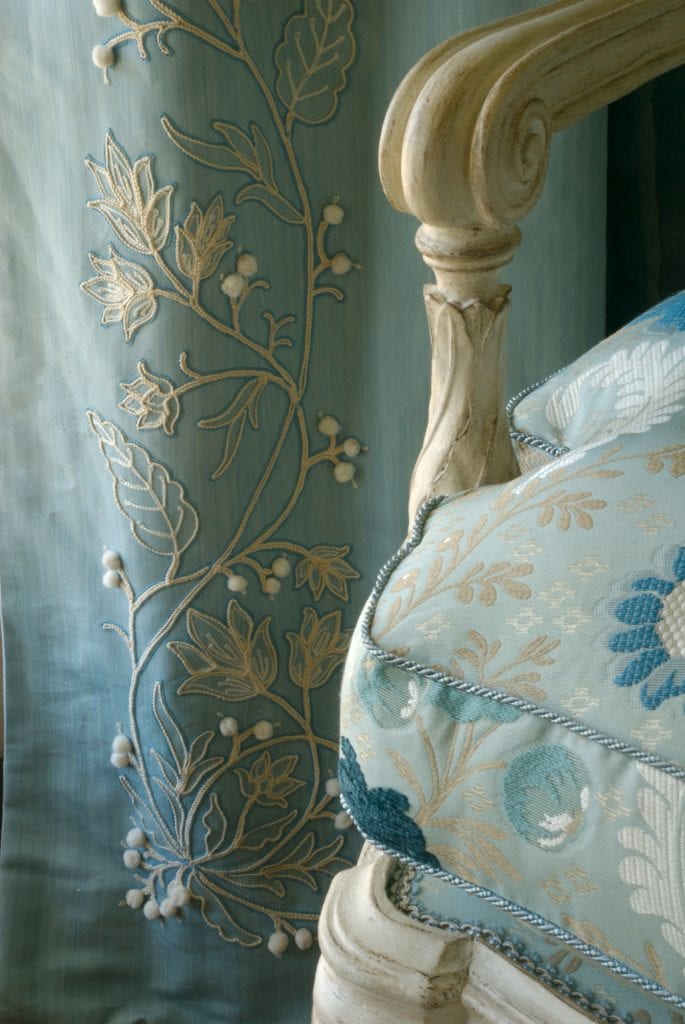
Q: What do you enjoy doing in your free time?
A: Well – not surprisingly in my free time I like to go antiquing. I also love to garden – it gets me “out of my head” and I find it very therapeutic to spend a weekend working away in my vegetable garden or in my cutting garden. I also love to go on summer garden tours. It gives me a chance to see some pretty spectacular homes that are normally not open to the public. Gardeners are a friendly group, and they love to talk about their gardens and share information – a great equalizer. In addition I like to travel – although now that we are in the “college tuition” phase of our lives we’re not doing as much of that right now. A new interest to me is cooking. My daughter and I started cooking together last summer, and I really took to it. For 20 years my wife was the fabulous cook of the family, and now it’s my turn. I love it because it’s social and I’m learning something completely new which is making my brain work in a different way – plus I get a good meal!
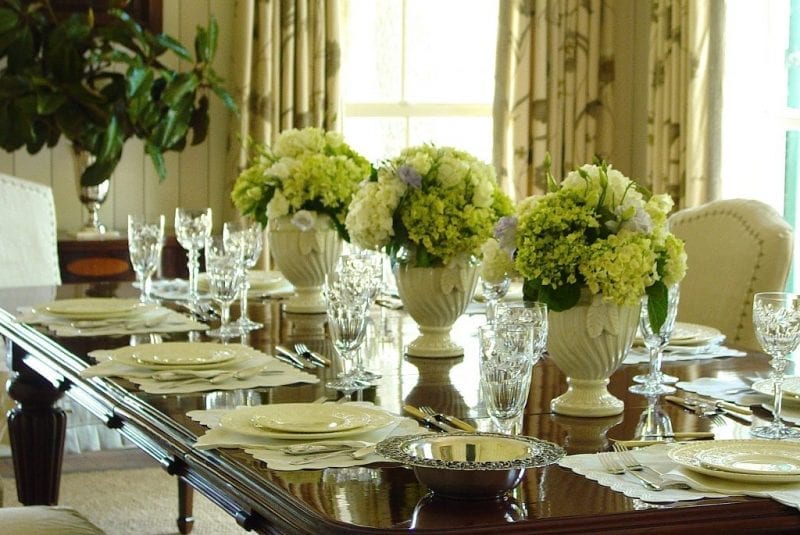
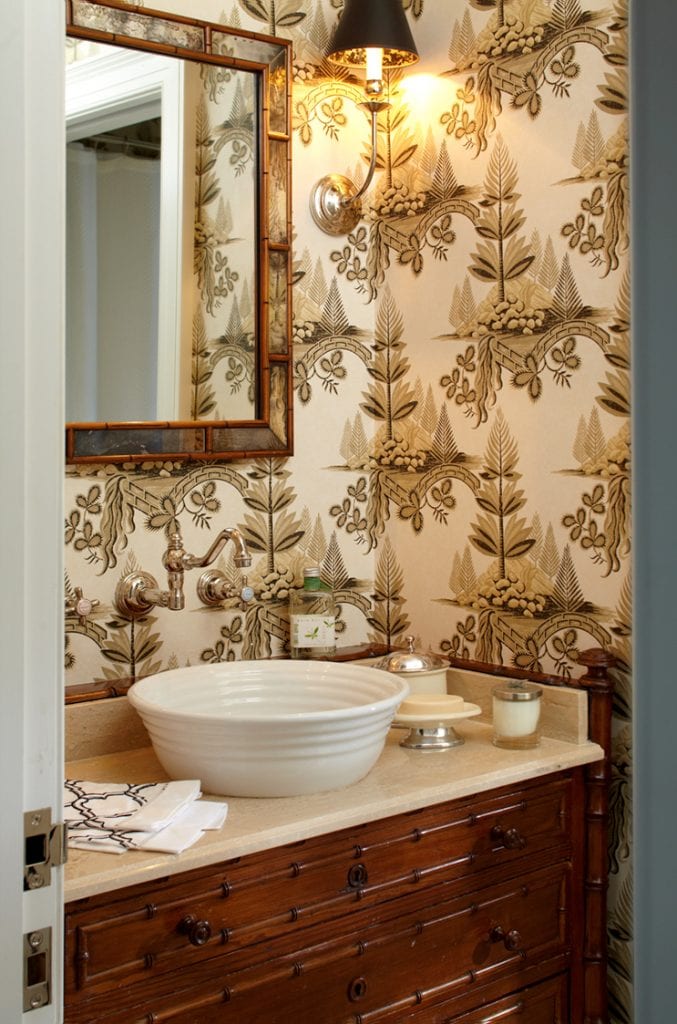
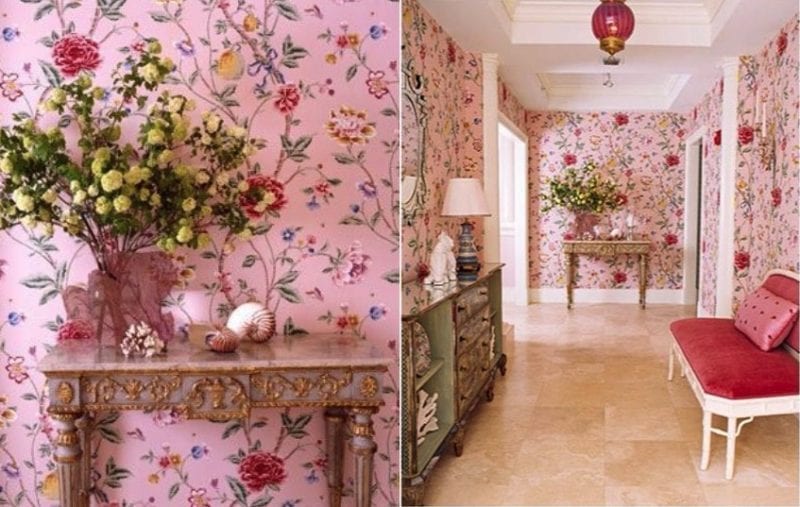
Q: Anything else you would like to add?
A: One of the magical things about interior design for me is that when I get the right client with a big, beautiful house, a big beautiful budget, and that trust I mentioned at the beginning of this long rambling response to your questions – not only can I create a spectacular home that surpasses the client’s expectations, but because of the energy and creativity that I pour into that project – I grow as a person. I derive great personal and professional satisfaction from the process and I make another person/persons/family happier because of it.
My final words are about the internet and the dearth of design magazines on the market. The way people view interior design has completely changed with the internet. When I stated in this field, the only way to “get your decorating fix” was to read a magazine, and I have to say that I do think there is something special and tactile about browsing through a magazine. It requires the reader to set everything aside for a time and just be in the moment absorbing the beauty of the work in the pages before them. It’s relaxing – it’s a break from the day – from the world. It reminds me of my History teacher at Choate who insisted we hand write all of our notes. She told us that the physical act of writing would commit the information to memory. Think of Proust and the chapter in Swann’s Way with the madeleine releasing a stream of memories. Doesn’t everyone remember lounging on a chaise poolside thumbing through decorating magazines, enjoying the sun, the pictures, the day – or in the cooler months – sitting next to the fire? I do! Scrolling down a screen, hunched over a keyboard isn’t my preferred way of looking at interiors – but thanks to you, Andrea – we can see beautiful – classic interiors the new way — online!

Michael, thank you so much for joining us today and sharing your most inspiring vision and expertise. I completely agree with every single word! To learn more, please visit Michael Whaley Interiors, Inc. and follow @mwhaleyinteriors on Instagram.



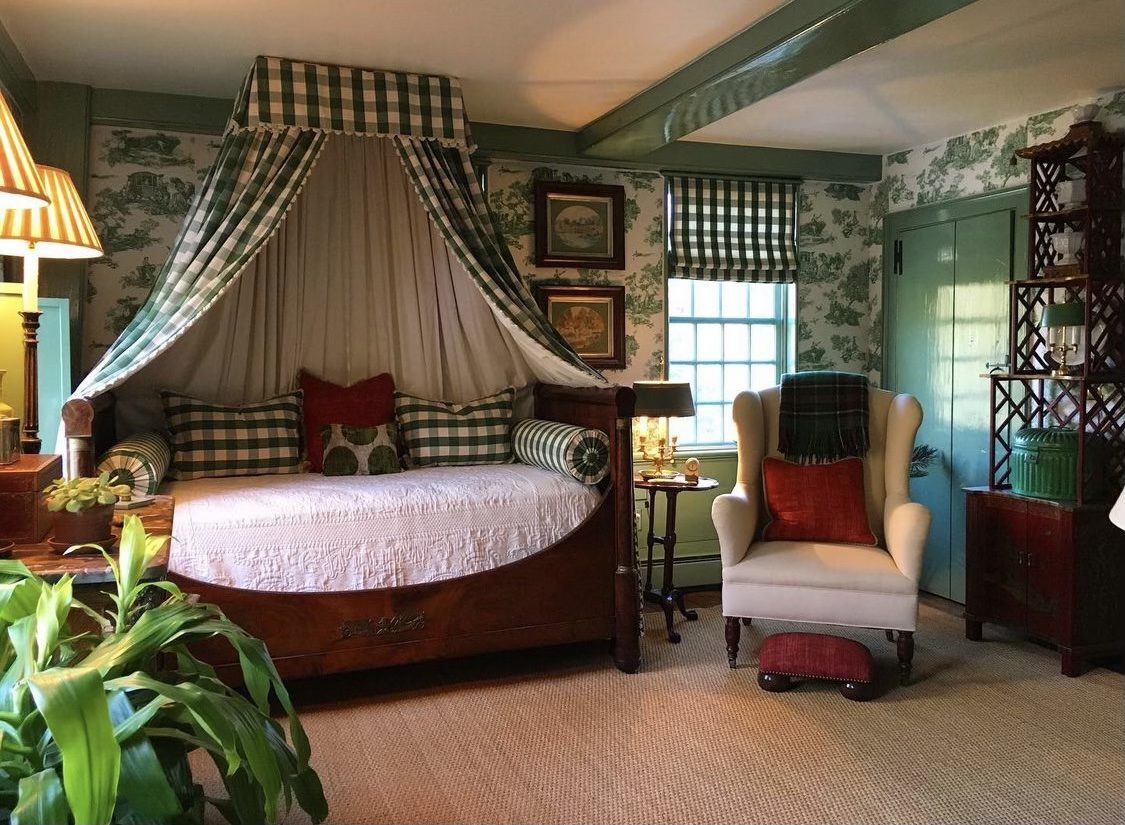


Enjoyed the interview with Michel Whaley…a most talented designer. I also enjoyed looking through his portfolio at his website. I hope he does a book sometime.
Dear Michael,
Great interview and your wonderful work! I especially
like the comfortable furniture placement and your
use of color and patterns- all very pleasing to the
senses!
Congratulations and a great future!
Mariooops
Your old Boss- Marioops
Love his design aesthetic. Really beautiful interiors and masterful use of colour. And those mirrored panels! Love. I can see the Mario Buatta influence, but he has his own style. Great post!
More wonderful rooms!!! Love everything Michael Whaley does. Layers of pattern and color, I can never get enough. Sadly he is also right about todays design magazines, I actually resubscribed to some in a false hope they had improved but they have not, lots of beige and gray and dull. Starting to think people have lost their zip in life. How can people not look at these beautiful rooms and say “I want that”?
Michael Whaley designs wonderful rooms! Layers of pattern and color, I can never get enough. Sadly he is also right about todays design magazines, I actually resubscribed to some in a false hope they had improved but they have not, lots of beige and gray and dull. Starting to think people have lost their zip in life. How can people not look at these beautiful rooms and say “I want that”?
Michelle-I totally agree…no style and so boring…Michael is an inspiration! Love the color!
Andrea – Thank you so much for this fabulous coverage! So thrilled to be the subject of your blog – what an honor!
Thank you so much Michael, not only for your wise words but also for being the kind person you are. You are extremely talented but also humble. Thank you for your “rambling responses,” as you describe them,? because I’ve learned so much from them.
I love the charm, sophistication and glamour of your interior design. Everything is just diva darling!!